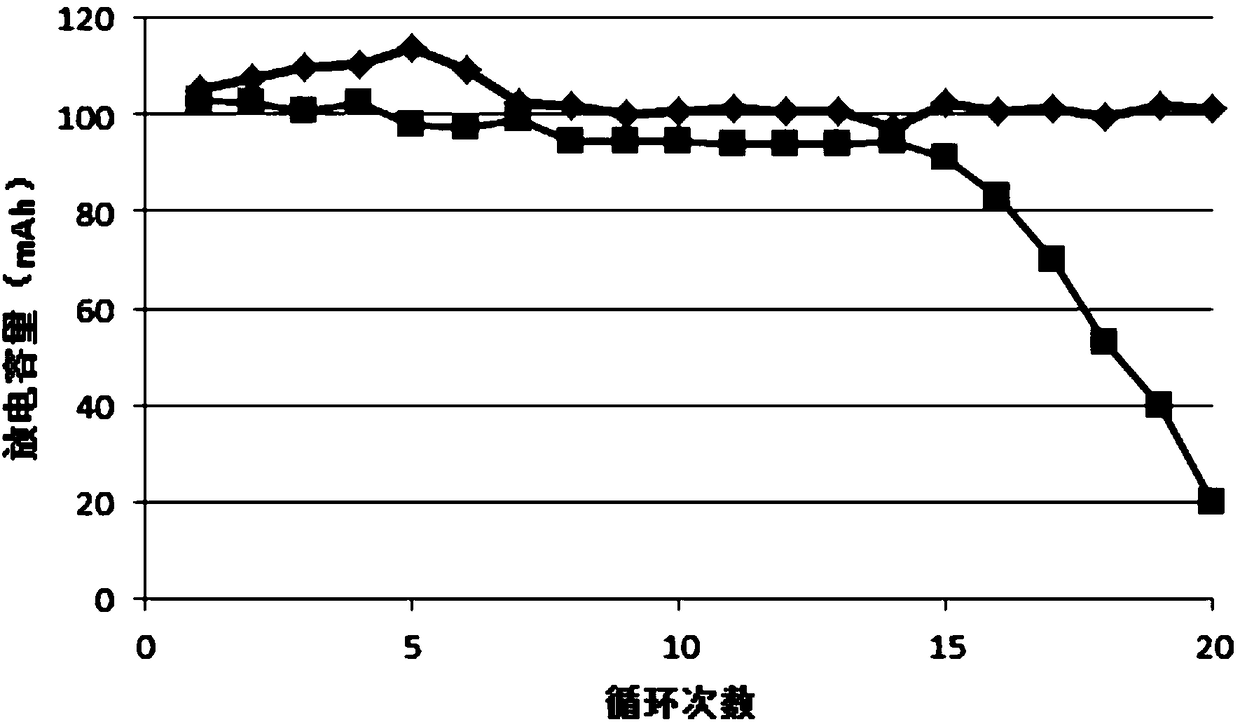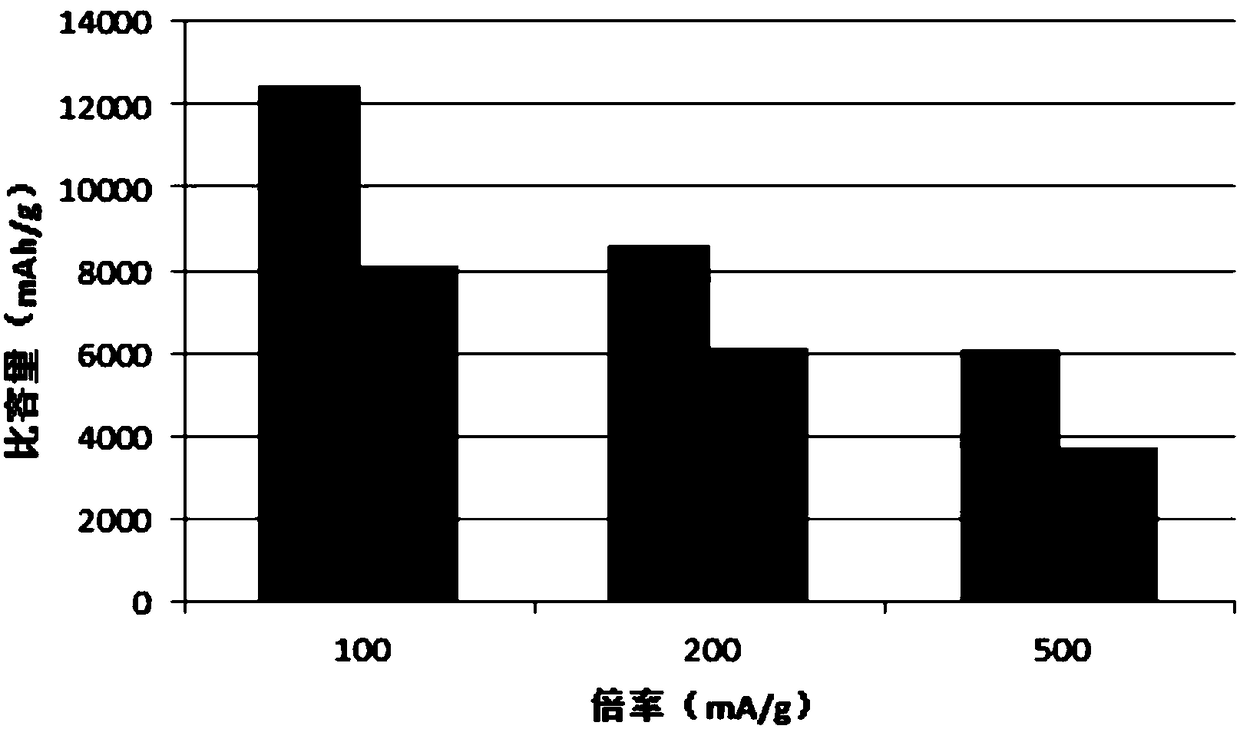Method for protecting lithium metal negative electrode, lithium metal negative electrode and lithium battery
A lithium metal negative electrode, lithium battery technology, applied in lithium batteries, battery electrodes, non-aqueous electrolyte batteries, etc., can solve the problems of unstable SEI film, pulverization, loss, etc., to improve safety performance and prevent lithium dendrites. produced effect
- Summary
- Abstract
- Description
- Claims
- Application Information
AI Technical Summary
Problems solved by technology
Method used
Image
Examples
Embodiment 1
[0036] The anionic polymer in this embodiment is commercially available sodium polyacrylate, and the boron nitride is commercially available flaky hexagonal boron nitride powder with a diameter of 0.3 to 1 micron and a thickness of 20 to 110 nanometers;
[0037] Mix 25 parts by mass of sodium polyacrylate with 75 parts by mass of hexagonal boron nitride powder and disperse them in tetrahydrofuran to obtain a dispersion with a solid content of 1%;
[0038] Coat the dispersion on the surface of the lithium strip in a drying room (dew point below -35°C) using a micro-gravure. The width of the lithium strip is 30 cm and the thickness is 75 microns, double-sided coating, air-dried to remove the solvent, and the coating is obtained A lithium metal negative electrode with a protective coating, the thickness of the coating is 0.2 microns.
Embodiment 2
[0040] The anionic polymer of the present embodiment is self-made Li-Nafion, and boron nitride is a self-made boron nitride nanosheet;
[0041] Mix 90 parts by mass of Li-Nafion with 10 parts by mass of boron nitride nanosheets, and disperse them in dimethylformamide to obtain a dispersion with a solid content of 6%;
[0042]Scrape-coat the dispersion on the surface of the lithium strip in a glove box (oxygen content <1ppm, water content <1ppm). The width of the lithium strip is 10 cm, the thickness is 100 microns, one-sided coating, and vacuum drying at 60°C for 48 hours to remove the solvent , to obtain a lithium metal negative electrode coated with a protective coating, the thickness of the coating is 1.8 microns.
[0043] The preparation method of Li-Nafion in this example is as follows: put the commercially available Nafion membrane into an aqueous lithium oxalate solution (0.1M), treat it in a water bath at 40°C for 24h, then wash it with deionized water, and dry it in v...
Embodiment 3
[0046] The anionic polymer of the present embodiment is self-made Li-Nafion, and boron nitride is a self-made boron nitride nanosheet;
[0047] Mix 75 parts by mass of Li-Nafion with 25 parts by mass of boron nitride nanosheets, and disperse them in dimethylformamide to obtain a dispersion with a solid content of 3%;
[0048] The dispersion is applied to the surface of the lithium strip by spraying in a drying room (dew point below -35°C). The lithium strip has a width of 10 cm and a thickness of 100 microns. It is coated on both sides and air-dried to obtain a coated The lithium metal negative electrode of the protective coating, the thickness of the coating is 1 micron.
[0049] The preparation method of the Li-Nafion of the present embodiment is as follows: put the commercially available Nafion membrane into a lithium bistrifluoromethanesulfonyl imide solution (0.5M), the solvent is ethylene glycol dimethyl ether, and stand at room temperature for 24h, Then the treated Naf...
PUM
| Property | Measurement | Unit |
|---|---|---|
| Diameter | aaaaa | aaaaa |
| Thickness | aaaaa | aaaaa |
| Width | aaaaa | aaaaa |
Abstract
Description
Claims
Application Information
 Login to View More
Login to View More - R&D
- Intellectual Property
- Life Sciences
- Materials
- Tech Scout
- Unparalleled Data Quality
- Higher Quality Content
- 60% Fewer Hallucinations
Browse by: Latest US Patents, China's latest patents, Technical Efficacy Thesaurus, Application Domain, Technology Topic, Popular Technical Reports.
© 2025 PatSnap. All rights reserved.Legal|Privacy policy|Modern Slavery Act Transparency Statement|Sitemap|About US| Contact US: help@patsnap.com



